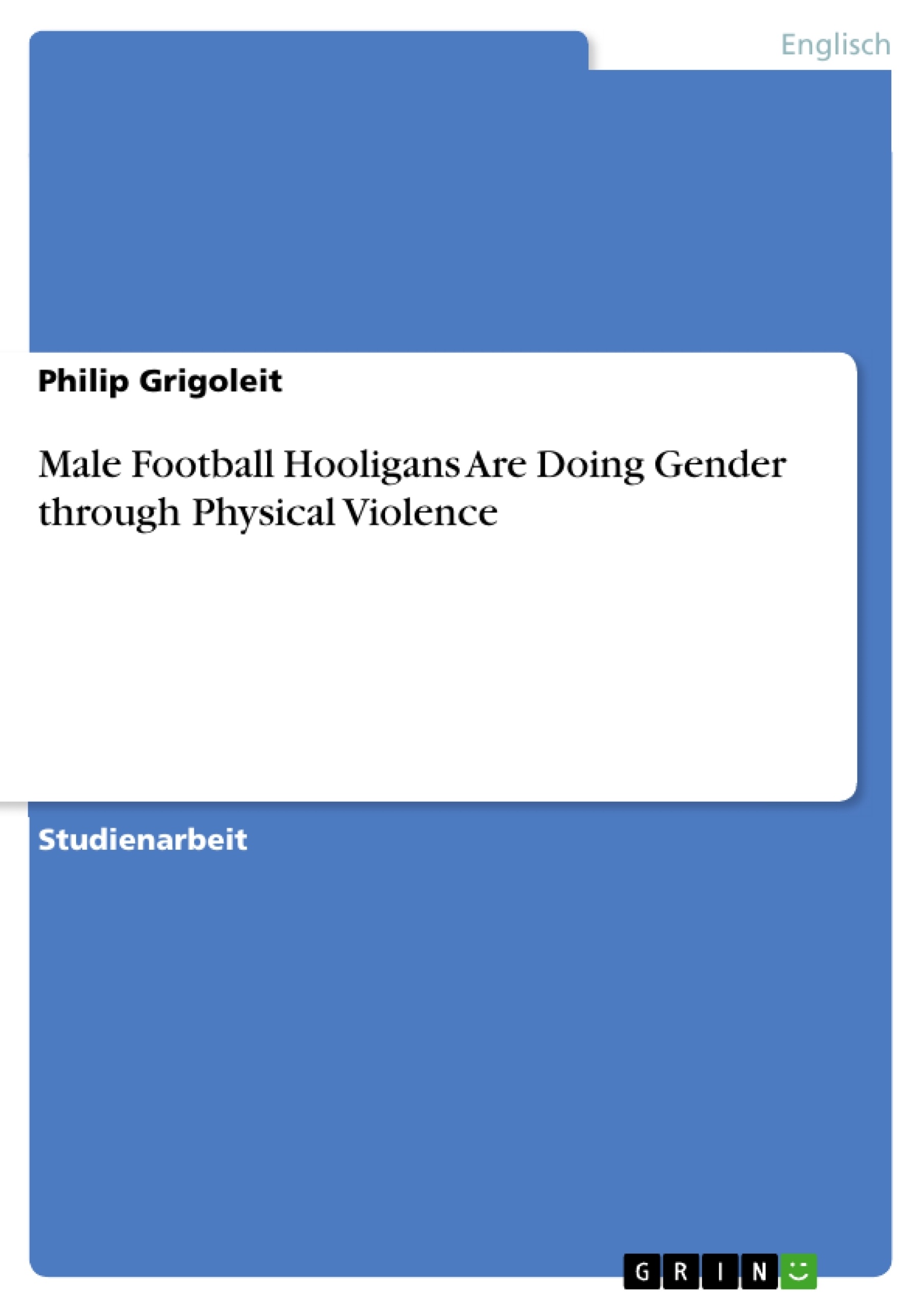Football is in central Europe one of the most popular sports if not the most popular. The numerous clubs of amateur football prove the popularity of the sport. There are stadia filled all around Europe with football fans. But the sport events are since its early days followed by violent phenomenons around the game. Fights in the stadium during the game before or afterwards became a problem. The groups were called hooligans and they coined the perception of football's fandom. The display of violence in hooliganism varies immensely from researcher to researcher. The proof for hooliganism as a violent phenomenon is given in the most researchers' results. Nevertheless the explanations of violence differ. Locating hooligans in society and analyzing the groups properties should help to find an explanation for their acting. The perspective on this phenomenon differs immensely depending on the spectator. Especially, the stereotype of the hooligan is coined by the media and only slightly by the results of academic approaches.
The stereotype of the football hooligan is that of the ignorant working-class "yob" who attends football matches as an opportunity to get into a fight, and not from any "genuine" interest in the game itself. His violence, like the destructive behavior of the vandal [...], is perpetually described as mindless, senseless,illogic and irrational.(Clarke 7)
The picture which is drawn in academic literature is different. This paper will compare gathered facts about hooliganism to explain the violent acting of hooligans. King argues that “the issue of violence at English football grounds has become of less pressing concern to the state and the media with the development of all-seater stadia. However, since fighting still occurs with regularity, the study of hooliganism is not without contemporary relevance." (576). The approach I had chosen, is gender related and will seek for co-relations between doing gender and the violent behavior of hooligan. During the work a relation between change of the labour market and the influence on the gender identities of men became visible. The hooligan who is according to his stereotype a rowdy without any reason is restored by arguments which try to explain his behavior. The violence of these football fans shall not be justified by the explanations.
Inhaltsverzeichnis
- Introduction
- Football Hooliganism
- History of Hooliganism
- Who is the Typical Hooligan
- Thesis Statement
- Reasons for Hooliganism
- Violence in Hooliganism
- Definition of Violence
- Real or Only Ritualized Violence
- Explanations of Violence
- Definition of "Doing Gender"
- The Instability of the Male Gender Identity
- Gender Mainstreaming
- Men as Victims of Force
- Hypermasculinity as a Goal
- Class as the Major Reason
- Conclusion
Zielsetzung und Themenschwerpunkte
Die Arbeit untersucht das Phänomen des Fußballhooliganismus aus der Perspektive der Geschlechterforschung. Sie will die Gründe für das gewalttätige Verhalten von Hooligans im Kontext ihrer Geschlechteridentität analysieren und beleuchtet, wie sich die Veränderung des Arbeitsmarktes auf die männliche Geschlechterrolle auswirkt.
- Die Geschichte des Hooliganismus
- Die Stereotypisierung des Hooligans
- Die Rolle von Gewalt und Hypermaskulinität im Hooliganismus
- Die Bedeutung der Geschlechterrolle und der Veränderung des Arbeitsmarktes
- Die verschiedenen Perspektiven auf Hooliganismus
Zusammenfassung der Kapitel
Die Arbeit beginnt mit einer Einleitung, die den Fußball als beliebte Sportart in Mitteleuropa vorstellt und auf die gewaltvollen Begleiterscheinungen des Fußballs, insbesondere den Hooliganismus, hinweist. Kapitel 2 befasst sich mit der Geschichte des Hooliganismus und verfolgt seine Entwicklung vom späten 19. Jahrhundert bis zur Gegenwart. Es werden sowohl organisierte als auch spontane Formen des Hooliganismus betrachtet.
Kapitel 2.2 analysiert das typische Profil eines Hooligans. Hier werden Merkmale wie Geschlecht, Klasse, Alter und ethnische Zugehörigkeit beleuchtet. Die Arbeit unterstreicht, dass Hooligans vor allem aus der Arbeiterklasse stammen und sich durch eine bestimmte Kleidungsweise auszeichnen. Kapitel 3 formuliert die Kernaussage der Arbeit: Der Hooliganismus ist kein Problem der Klasse, sondern ein Problem der gestörten Maskulinität.
Kapitel 4 bis 6 beleuchten die Gründe für das gewalttätige Verhalten von Hooligans. Dabei wird die Bedeutung der Geschlechterrolle und die Auswirkungen der Veränderung des Arbeitsmarktes auf die männliche Geschlechteridentität hervorgehoben. Die Arbeit argumentiert, dass Gewalt für manche Männer eine Möglichkeit darstellt, ihre Männlichkeit zu demonstrieren, insbesondere in Zeiten des Wandels und der Unsicherheit.
Schlüsselwörter
Fußballhooliganismus, Geschlechteridentität, Hypermaskulinität, Arbeiterklasse, Gewalt, Veränderung des Arbeitsmarktes, Stereotypisierung, Gender Mainstreaming, Fußballkultur.
- Quote paper
- Philip Grigoleit (Author), 2013, Male Football Hooligans Are Doing Gender through Physical Violence, Munich, GRIN Verlag, https://www.grin.com/document/280165



